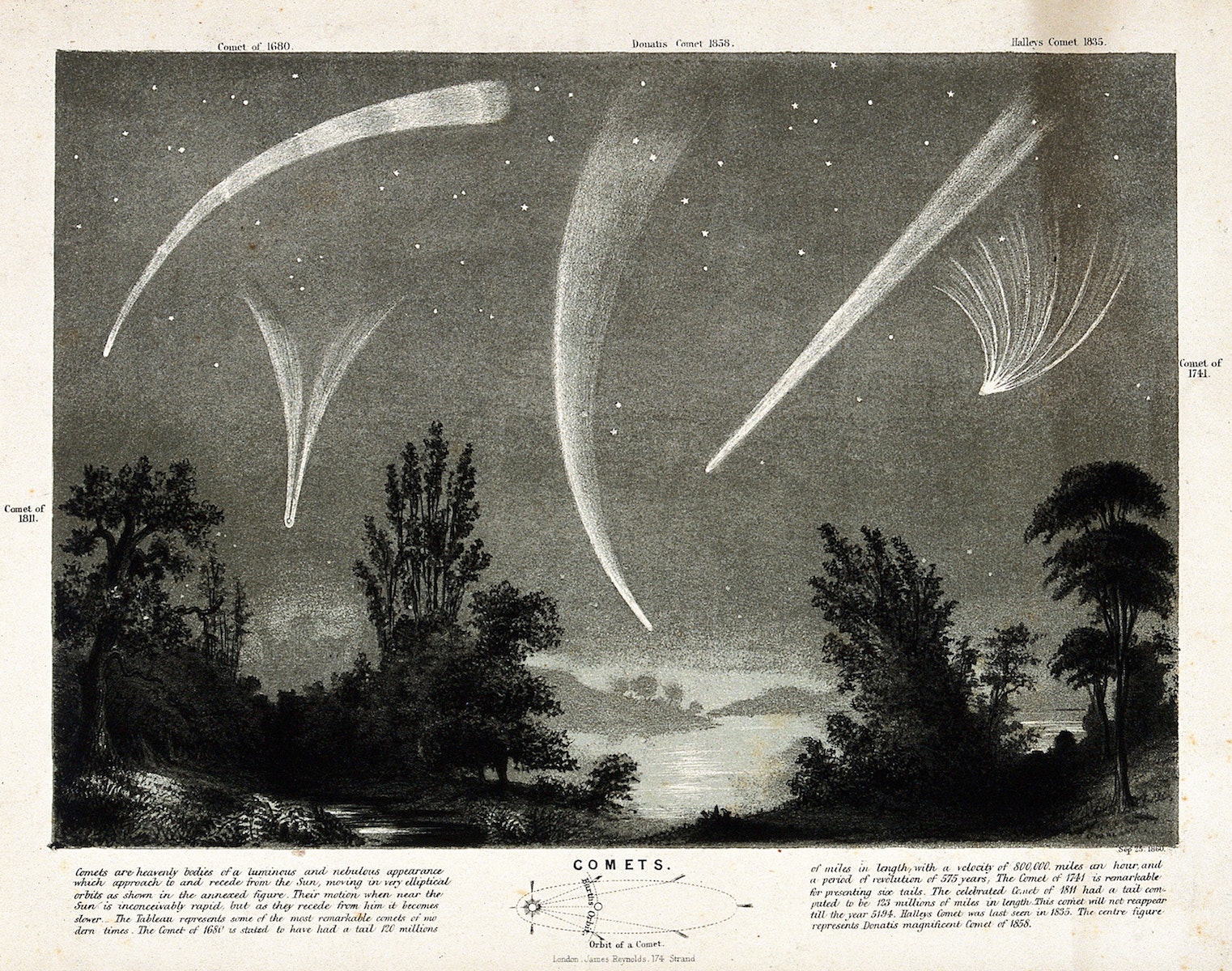
October 31, 2024 by Brian Koberlein
Collected at: https://www.universetoday.com/169104/astronomers-predict-the-orbits-of-potentially-hazardous-comets-from-meteor-showers/
Comets have long been seen as omens and portents, and it’s easy to understand why. They first appear as faint smudges of light in the sky, sometimes fading soon after and sometimes becoming brighter than the planets, with a long, glowing tail. They have been observed throughout human history, but it wasn’t until the eighteenth century that astronomers began to predict the return of some comets. Even today, we can’t predict the return of most comets until after they swing through the inner solar system. If such a comet happens to be heading toward Earth, we wouldn’t know about it until too late. But that could change thanks to our observations of meteor showers.
Comets originate from the Oort cloud, the icy remnant of our solar system’s birth that surrounds the Sun as a sphere 100,000 AU in diameter. Whether through a close collision with another Oort object or the nearby passing of a star, some of these distant chunks of ice and rock are sent tumbling toward the inner solar system. They can come from any direction in the sky, and once they dance near the Sun they may not return for hundreds or thousands of years. Any comet with a period longer than 200 years is known as a long-period comet, and these are the hardest to predict.
Most long-period comets pose no threat to Earth. They might appear bright in the evening or morning sky, but their orbits don’t cross Earth’s orbit, so there is no risk of impact. But some long-period comets could pose an impact threat to Earth. We know this in part because we’ve been hit by comets before, and in part because we observe regular meteor showers. Showers such as the Geminids, Perseids, and Orionids are caused by the dusty trails left by comets as they cross Earth’s orbit. In these cases, we have even identified the originating comets as Phaeton, Swift-Tuttle, and Halley’s. But of these, only Swift-Tuttle is a long-period comet (barely) with an orbital period of 257 years.

These connections between comets and meteor showers were made by first knowing the comet’s orbit then connecting its path to known showers. In principle, we should be able to do it the other way around. Identify what the path of a meteor shower is, and then use that to search for its long-period comet. As new telescopes such as Rubin Observatory come online, this approach could become a useful tool in the search for impact threats. A recent study on the arXiv shows how this would work.
The team ran simulations of long-period comets ranging from 200 to 4,000 years. They estimated the dust trails these hypothetical comets would produce, then set out to determine if astronomers could use these trails to work backwards to locate the originating comet while it is far from the Sun. In anticipation of having high-resolution sky surveys, the team assumed astronomers could observe them at the anticipated resolution of Rubin Observatory. They found that the orbits of many comets don’t produce showers useful for prediction, but in 17 cases, the showers could be used to identify comets months or years before they would typically be noticed.

To prove this point even further, the team also looked at a meteor shower called the ?-Hydrids, a faint shower that appears in early December. The origin of the sigma-Hydrids was not known until the appearance of Comet Nishimura in 2023. Once the orbit was determined, astronomers found a possible connection to the sigma-Hydrid showers. Using known observations of the shower before 2023, the team was able to determine a possible orbit for the comet. They found that with a Rubin-like sky search, astronomers could have found Nishimura eight months before its actual discovery.
Reference: Hemmelgarn, Samantha, et al. “How Meteor Showers Can Guide the Search for Long Period Comets.” arXiv preprint arXiv:2410.02883 (2024).

Leave a Reply